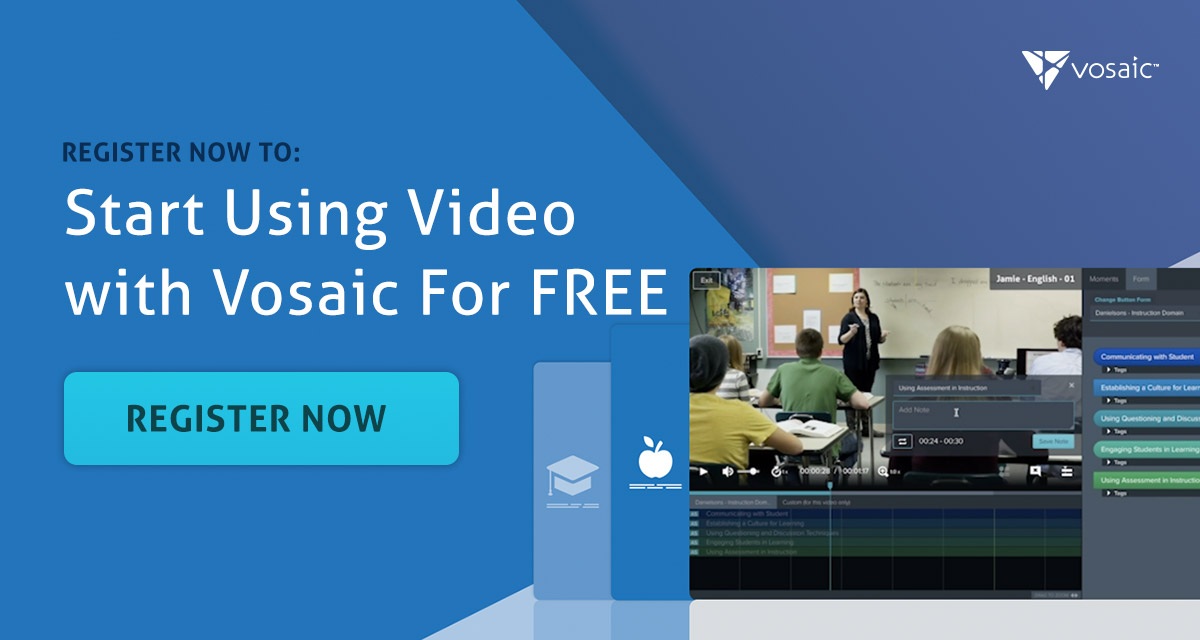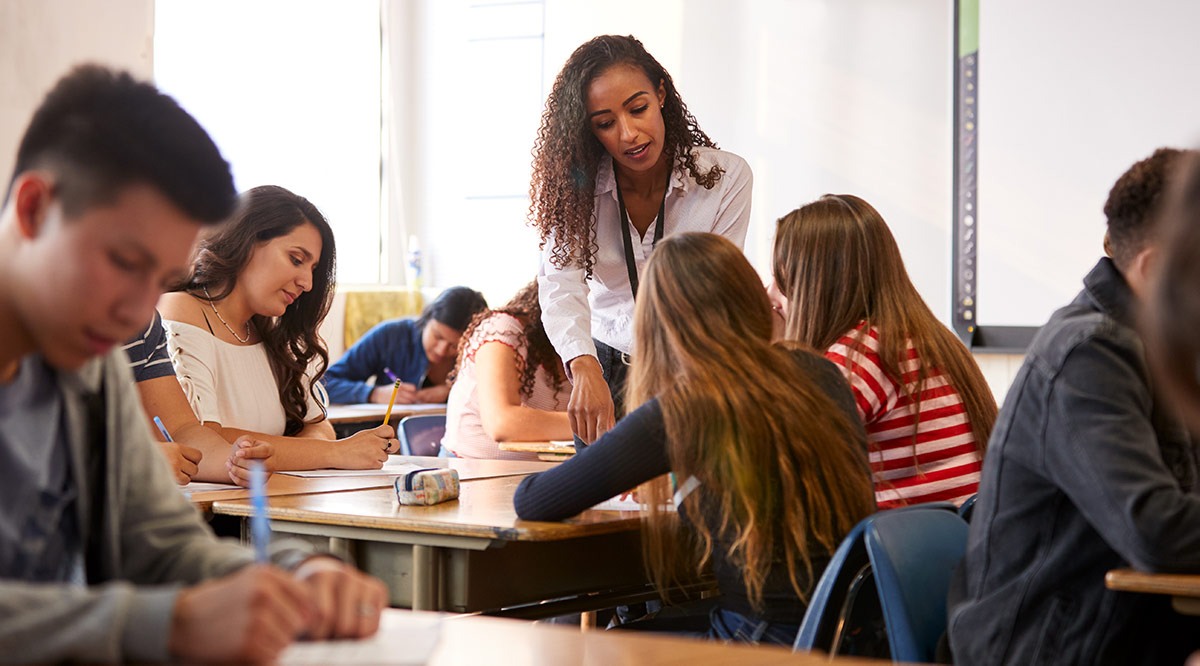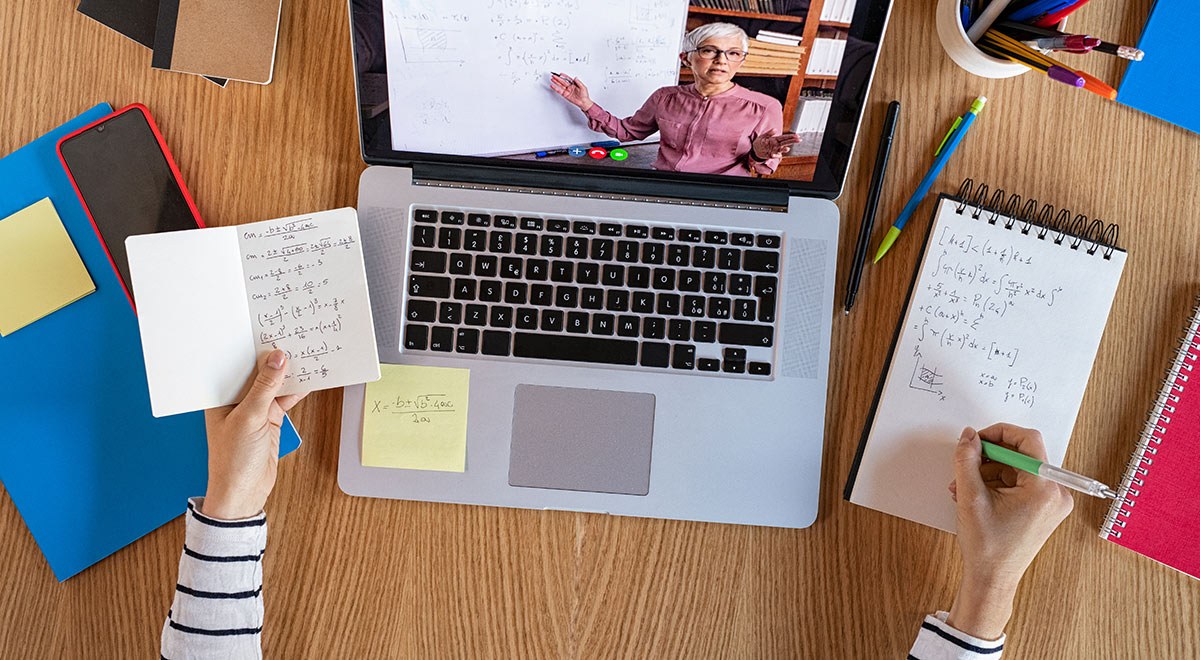While teacher observation has become heavily regulated and utilized in classrooms worldwide, it is important to note that it is not the only method to improve teacher effectiveness. The pressure that teachers endure during observations often demonstrates an inaccurate representation of teacher behavior and assumes that effective classroom practices are known and recognizable.
Additionally, observers often struggle to provide unbiased feedback, leaving teachers frustrated and unsure about what practices to implement or alter in their classrooms. So, how can teachers utilize critical self-reflection to deeper understand their teaching style and determine how to improve their effectiveness?
Stay on Top of Important Discoveries
We read case studies and academic journals so you don’t have to. Sign up and we’ll send you the key takeaways.
Why Teacher Observations fail to represent accurate competency levels
If you don't have a Vosaic account for teacher coaching and observation, you can start with a free trial today.
Throughout teacher observations, many factors are present that suggest conclusions drawn from these findings might not always give an accurate view into a teacher's practice, and educators should utilize alternative feedback processes to improve effectiveness. Teachers experience high levels of stress throughout observations as peers or administrators evaluate their teaching methods, which can cause uncharacteristic behavior to occur. Especially as significant staffing decisions such as reemployment or promotions continue to rest on evaluations, the stress teachers endure during these times continues to rise. Furthermore, as Susan Stodolsky studies in her article "Teacher Evaluation: The Limits of Looking," teacher evaluations rest on the assumption that effective teaching practices are known and recognizable.
Many school districts assume that because of the high regulation in teacher observations, evaluators will be able to identify effective practices in the classroom and provide a fair examination. However, administrators evaluate based on specific criteria that prompt them to observe if teachers demonstrate chosen actions and provide a summary score on the teacher's class. This evaluation process encourages standardized teaching practices that create consistency and fails to acknowledge systematic variation that boosts classroom engagement (Stodolsky, 1984).
Therefore, it is wrong to assume that small actions observed during an evaluation period represent an accurate picture of a teacher's capabilities. Since feedback from teacher observations often contain bias due to the limited actions evaluated and fails to recognize the variation in teaching practices, it is essential that educators self-reflect on their teaching methods to identify patterns and improve their effectiveness.
What is self-reflection, and why is it important for teachers?
Before we examine how self-reflection enhances teachers' effectiveness, what exactly is self-reflection? According to the Cambridge Dictionary, self-reflection is "the activity of thinking about your own feelings and behavior and the reasons that may lie behind them." While many individuals acknowledge the importance of self-reflection in their personal lives, some may wonder how this action can improve interactions in the classroom. The act of self-reflection allows teachers to recognize recurring patterns in their teaching to focus on what is most effective, avoid complacency, gain the ability to act more intentionally, and identify areas of improvement.
Ask yourself questions to recognize patterns:
After a lesson or student interaction, reflecting allows teachers to ask themselves questions about their practice and identify what they can do to improve. What actions am I currently implementing in my classroom and why? Reflecting on the effectiveness of your current methods will determine if you genuinely believe your teaching is most beneficial or if it is what you are most comfortable with. Teachers may also ask themselves, how can I encourage more engagement with my students? You might discover that you need to adjust how you deliver instruction to keep students engaged and involve them in an alternative manner. From these self-reflections, educators can consider what choices they can make to grow in the following areas.
Avoid complacency:
Reflective teaching fosters a mindset of continuous growth that prevents teachers from becoming complacent in their teaching methods. Hibajene Shandomo shares a story that explains if teachers have ten years of experience but simply repeat the same techniques year after year; they only have one year of experience repeated ten times (Shandomo, n.d.). This story suggests that it is critical to reflect on your teaching methods to improve classroom effectiveness and avoid stagnation.
Act deliberately instead of reactively:
Interactions with students and other factors cause teachers to constantly make decisions throughout their lessons, sometimes resulting in random or reactive responses rather than acting intentionally. While reactive actions are inevitable in the classroom, it is essential that teachers strive to limit their reactive behaviors and instead teach with intent. Reflecting on a particular lesson allows teachers to evaluate what went well in that lesson and identify actions that they would modify in the future. Therefore, if a similar situation occurs in the future, the educator has reflected on how they would approach it and can act according to what they feel is most effective.
Identify areas of improvement:
Once an educator has had the opportunity to reflect on their teaching and identify recurring behaviors in the classroom, they can identify areas they want to improve. Often, reflecting on improvement can be a daunting task as many individuals strive to improve in too many places and struggle to stay on track with their original goals. Since many individuals lack specificity in goal setting, one way to combat this tendency is to identify strengths and weaknesses. Educators should set a few goals to help them grow in areas of weakness and develop specific measurements to track improvement towards these goals.

How should I self-reflect?
After examining the benefits of self-reflection in teacher effectiveness, educators are eager to implement reflection into their daily routine but may be hesitant; it takes time and effort to add a review on top of a long list of daily tasks. However, self-reflection does not need to consume inordinate amounts of time to be effective. Critical reflection can take place through actions that will still respect the time of a busy educator.
Journal reflection
Utilizing a journal to reflect can help teachers recall specific events and document significant actions from that day. After a lesson or day of teaching, taking five minutes to reflect on what went well, what could have gone better, and one thing to focus on improving tomorrow takes minimal effort but will reap substantial rewards. Additionally, the physical act of reflective journaling helps educators set clear parameters around their reflection time before moving on to their next task.
Video reflection
Video-based reflection allows educators to observe their teaching both from a teacher's and students' perspective. Teachers have to balance educating students in various subjects, tending to students' varying skill levels, and developing their teaching interests to create engaging lesson plans. Due to the multitude of factors that teachers have to balance while teaching, video allows educators to view aspects they might miss. Furthermore, video reflection grants you the opportunity to evaluate unconscious actions and reflect on correcting these behaviors. While we know that self-reflection helps educators improve their effectiveness, if teachers aren't aware they are performing a particular activity, they can't reflect on how to improve it. Video is the only way to evaluate all factors of your teaching practice in an unaltered and unbiased manner and allows educators to evaluate specific parts of their lesson.
About Vosaic
Vosaic's secure cloud-based video platform is used to help teachers, pre-service teachers, and administrators bridge the gap between theory and practice. Easy-to-use video recording, commenting, and sharing enables users to observe, coach, and self-reflect more effectively.




